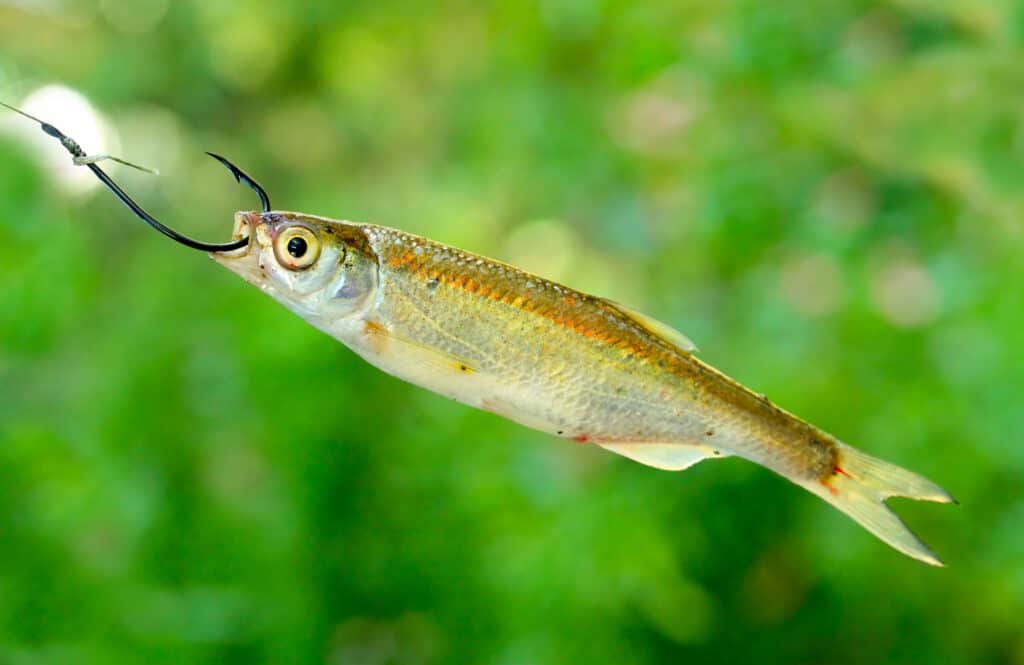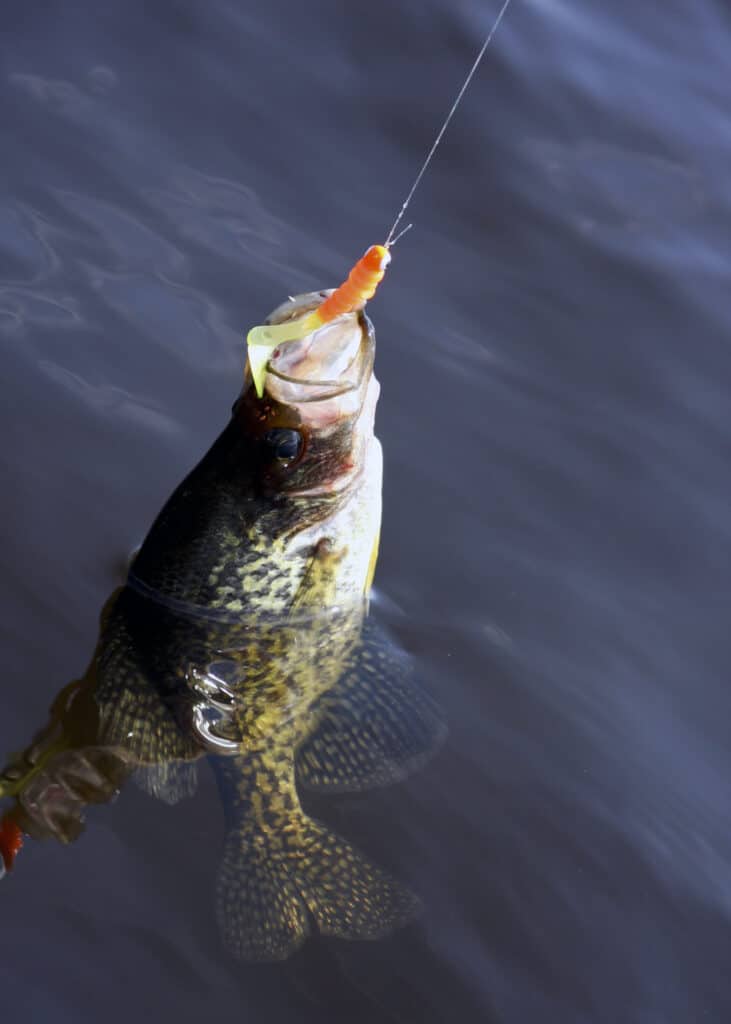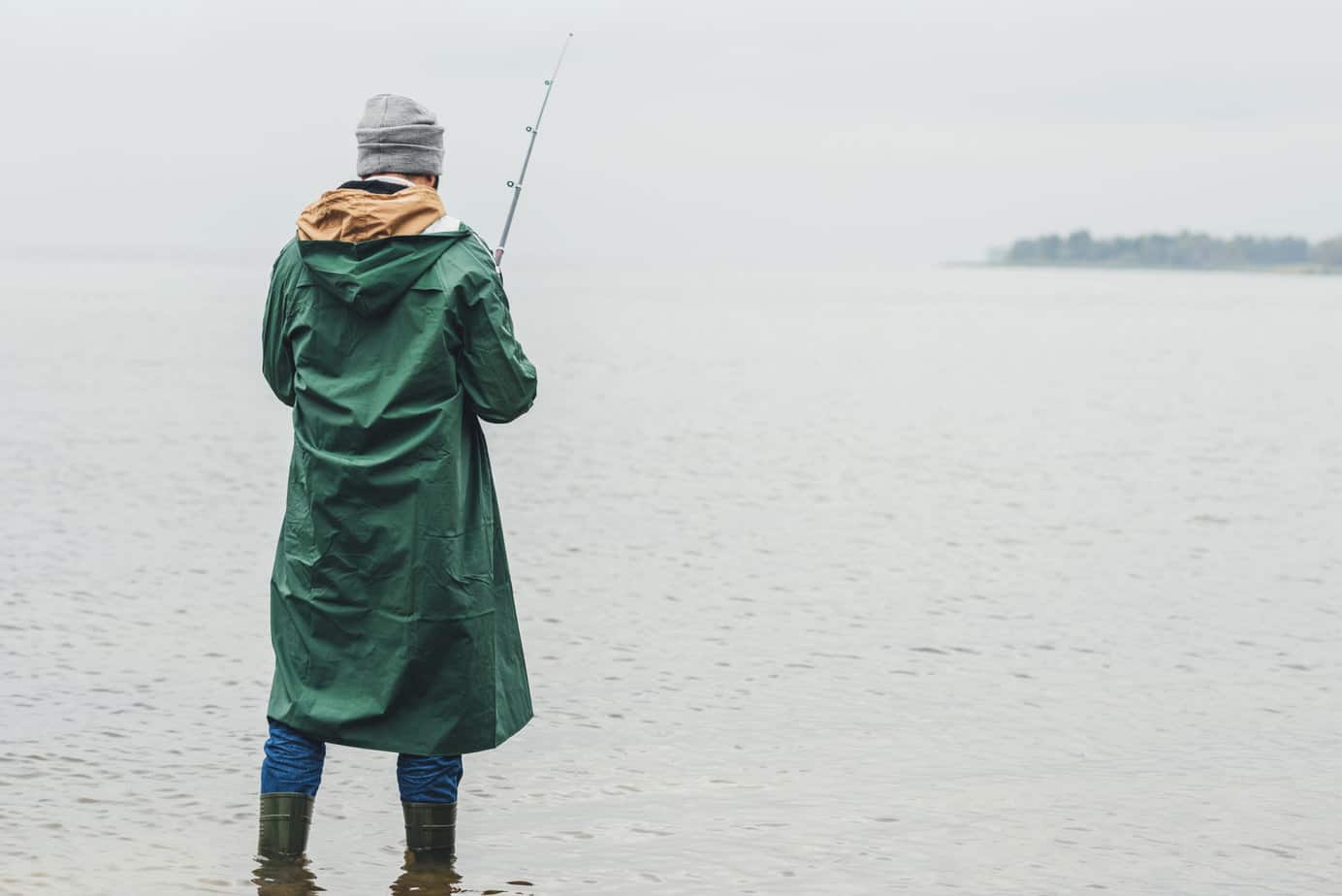Crappie fishing can be an exciting and rewarding pastime for anglers of all skill levels.
However, weather conditions can drastically affect the behavior and location of these fish, making finding and catching them a bit more challenging.
After a rain, many crappie seek cover in areas such as thick brush piles in channel swings, boat dock pilings, bridge pilings, or tree stumps, making these locations prime spots for anglers to target.
Crappie are often more active in the water during and after rainfall, which can lead to different fishing strategies being more effective.
Slow trolling techniques can be especially useful in these conditions, as well as employing lure fishing beneath floats, which may sound unusual but has proven successful for many anglers.
Additionally, after heavy rain, setting up multiple fishing lines near river banks can increase your chances of catching crappie, as water levels may have risen due to the downpour.
Understanding Crappie Behavior after Rain
Effects of Rain on Water Conditions
After rainfall, water conditions tend to become murkier due to rainwater washing mud and debris into the water, making it harder for crappie to see well.
As a result, these fish often hold tight to cover in order to feel secure in their environment.
Additionally, water levels and temperatures can fluctuate after heavy rainfall. This may cause crappie to be less active and prefer warmer water temperatures.
Crappie Movement Patterns
In response to these changes in water conditions, crappie often move to different areas in search of shelter and food.
For instance, in areas with a strong current, crappie may gather at the mouths of tributaries to find relief from the fast-moving waters.
During this period, it is useful to employ slow trolling fishing techniques to effectively target crappie after rainfall.
Another helpful approach is using lure fishing beneath floats, which involves casting a lure into the water with a float underneath it.
Despite sounding unusual, this technique has proven effective in catching crappie after rainfall events.
Choosing Effective Crappie Baits

Finding the right baits for crappie after a rain is essential for success.
This section will guide you through the process of selecting optimal live baits and artificial lures to maximize your chances of catching crappie in these challenging conditions.
Live Baits
Crappie are known to favor minnows as their primary food source when conditions are muddy or murky after a rain.
Using live minnows as bait can produce great results in these situations.
Selecting the right size and type of minnow is vital to effectively catch crappie.
When fishing after a rain, opt for natural-looking minnows to closely mimic the fish’s preferred prey in the environment.
Artificial Lures
When choosing artificial lures for crappie fishing after a rain, consider the visibility of your bait in the murky water.
Using small jigs with a ⅛ ounce weight is a popular and effective choice for many anglers.
Brighter lure colors can help increase visibility during rain, making it more attractive to crappie.
Another option worth exploring is floating jigs.
These lures can be particularly effective in drawing crappie out from hiding spots as they mimic the movement of natural prey close to the water’s surface. Experiment with different colors and sizes to see which combination works best for the specific conditions and crappie behavior after a rain.
Locating Crappie Hotspots
Cover and Structures
Crappies often seek refuge in cover and structures for protection and to find prey after rainfall, when the water is murkier.
Both natural cover, such as fallen trees and brush piles, and man-made structures, like docks and submerged objects, provide excellent hiding spots for crappies.
By fishing close to these areas, anglers can significantly increase their chances of catching crappie post-rain.
During this time, it is essential to use the right bait and to be patient while waiting for crappies to bite.
Finding Crappie in Creeks and Rivers
After heavy rain, crappie can often be found near river banks, especially when the water level is significantly higher than usual. I suggest targeting these locations during this time.
Moreover, crappies may head to clearer waters in creeks and rivers as the rain causes the water to become murky.
Utilizing your knowledge of local flows and currents, along with understanding the preferred conditions of crappies, can help you find prime locations to reel in a crappie after rain.
Keep in mind that the spawning season, which typically occurs at the beginning of spring, is also an ideal time to fish for crappie.
Using Proper Fishing Techniques
When fishing for crappie after a rain, it’s essential to use appropriate fishing techniques to increase the chances of a successful catch.
This section focuses on two methods that have proven effective: vertical jigging and slow trolling.
Vertical Jigging
Vertical jigging is an efficient technique, as it allows you to present your lure or bait directly in front of the crappie’s face, making it hard for them to resist.
To perform vertical jigging, use a lightweight jig head and pair it with brightly colored soft plastic or live bait.
After a rain, crappie may seek out cover to find stable water conditions, so focus on areas near structure or vegetation.
Drop your jig into the water, allowing it to sink to the desired depth.
Then, slowly lift your rod tip and pause for a moment before dropping it back down. Repeat this process to create a continuous jigging motion, enticing the crappie to strike.
Slow Trolling
Slow trolling is another method that can produce results when fishing for crappie after rainfall.
This approach involves slowly navigating your boat while dragging your bait or lure behind you at a controlled depth to cover a larger area in search of active fish.
To achieve this, use a long fishing rod equipped with a spinning reel and light line.
Select a lure or swimbait that mimics the natural prey of crappie, such as minnows or shad.
Attach it to the line and set it at the desired trolling depth.
As you slowly move your boat, make sure to vary your speed and direction to cover a range of areas where crappie may be holding.
I suggest using a float if needed to help maintain the lure at the right depth.
Adapting to Changing Weather Conditions

Crappie fishing after rain often requires adjusting to various weather changes. In this section will discuss temperature fluctuations, wind, and cloud cover, and how they affect crappie behavior.
Temperature Fluctuations
After heavy rainfall, the water temperature can drop, leading to changes in crappie behavior.
Crappie, like most fish, prefer warmer water and may become less active in colder conditions.
Sudden decreases in water temperature will typically cause crappie to seek deeper water.
Utilize fish-finding technology and adjust your techniques accordingly to locate and catch crappie in deeper waters.
Wind and Cloud Cover
After a rainstorm, wind direction and cloud cover can also influence crappie behavior.
Wind often stirs up the water and concentrates baitfish, with crappie following them to feed.
Be aware of wind direction and fish on the leeward side of the lake, where baitfish and crappie are more likely to congregate.
Cloud cover can also have an impact on crappie fishing.
Overcast conditions may prompt crappie to move closer to the surface, making them more accessible for anglers.
In such conditions, consider using lighter lures to target crappie feeding closer to the surface.
Safety Tips for Fishing after Rain
Fishing for crappie after a rain can be an effective strategy, but it’s vital to prioritize your safety.
This section will discuss how to prevent hypothermia and remain vigilant of other potential hazards.
Preventing Hypothermia
Hypothermia is a significant concern when fishing in wet and cold conditions.
Here are a few tips to help you avoid hypothermia while fishing after a rain:
- Wear layered, moisture-wicking clothing to help regulate your body temperature and stay dry.
- Choose waterproof outer layers, such as a rain jacket and pants, to protect against rain and splashes.
- Carry extra clothing with you in case your initial layers become too wet.
- Take regular breaks to warm up, especially if you feel chilled or if your movements become sluggish.
Watching for Other Hazards
Aside from the risk of hypothermia, there are other potential hazards to be aware of while fishing after a rain.
Some of these hazards include:
- Fast-flowing water: Heavy rain can lead to rapid current changes and potential flash floods. Be cautious when approaching the water’s edge, and avoid wading into areas with fast-moving water.
- Slippery surfaces: Wet rocks, boat ramps, and docks can become extremely slippery after rain. Always tread carefully, and wear shoes with good traction.
- Thunderstorms: If a storm is still active, it’s essential to remain vigilant of lightning risks. Wait until the storm has passed before venturing out to fish.
By being attentive to both preventing hypothermia and monitoring other potential hazards, you can ensure a safe and successful crappie fishing experience after a rain.

